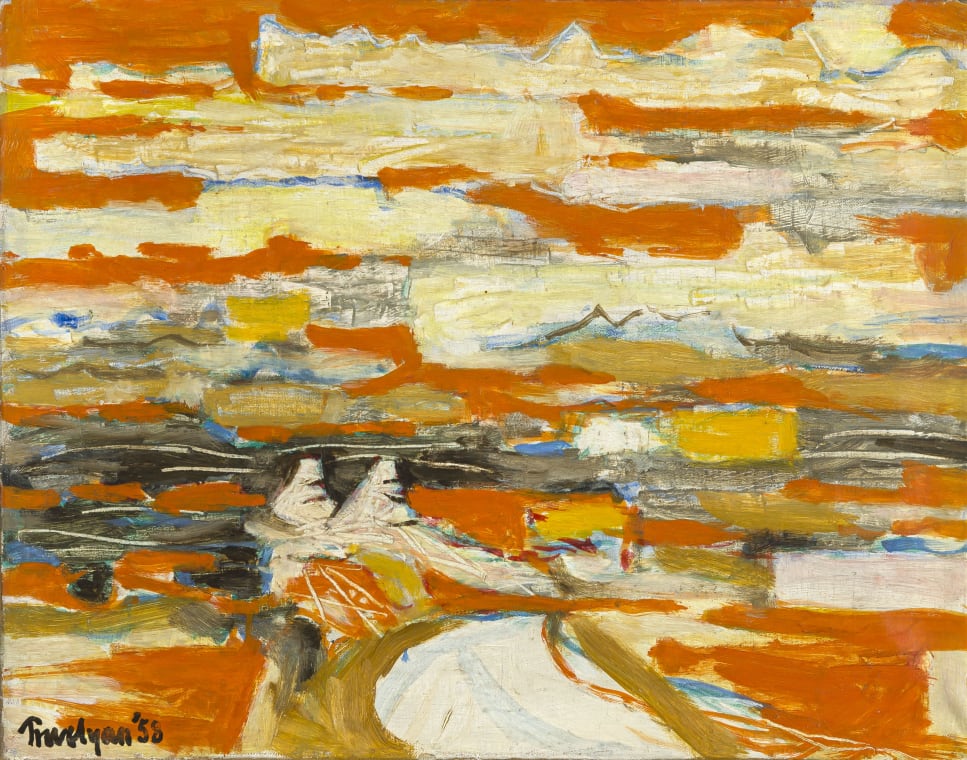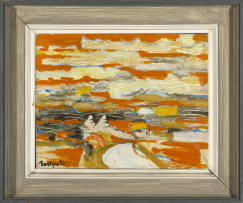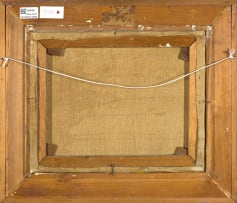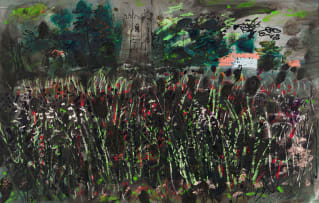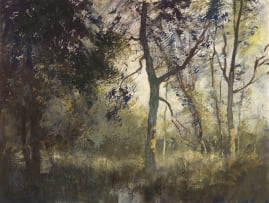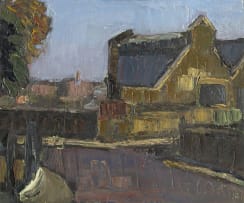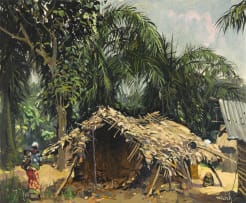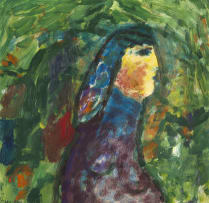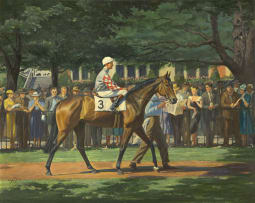Transcending Boundaries: International Modern and Contemporary Art
Live Virtual Auction, 25 October 2023
International Modern and Contemporary Art
Incl. Buyer's Premium & VAT
About this Item
signed and dated '58; inscribed with the artist's name, the title and medium on a label adhered to the reverse
Notes
Throughout his long and distinguished career, Julian Trevelyan explored various modes of representation from Surrealism to Abstraction. Sienese Landscape-Variation II, Orange, was produced while Trevelyan was employed at the Royal College of Art between 1955 and 1963. This abstracted clouded landscape, executed largely in orange, streaked horizontally with cream and yellow, with ochre and umber hues, features the Thames from the artist's studio.
Trevelyan was a British Surrealist painter, printmaker, teacher, and writer born in Dorking, Surrey. He was the son of the poet RC Trevelyan; grandson of the liberal politician Sir George Trevelyan, 2nd Baronet; nephew of the historian GM Trevelyan; and the great-uncle of the pianist Julian Trevelyan, his namesake. His first wife, potter Ursula Darwin, was the great-granddaughter of Charles Darwin. Trevelyan attended the University of Cambridge's Trinity College between 1928 and 1930, before moving to Paris, France to study at Atelier 17 from 1931 to 1934. It was at Atelier 17, a printmaking workshop run by English artist Stanley William Hayter, that Trevelyan met Joan Miró, Max Ernst, Alexander Calder, Oskar Kokoschka, and Pablo Picasso. In 1935, he settled in Durham Wharf, located in the Hammersmith district of London, which became a constant source of inspiration for his artwork. The following year, Trevelyan joined the English Surrealist group and participated in the International Surrealist Exhibition in London. During World War II, he served as a Camouflage Officer for the British Army. After the war, Trevelyan taught art history and etching at the Chelsea School of Art from 1950 to 1955 and printmaking at the Royal College of Art from 1955 to 1963. Among his students were David Hockney, Ron Kitaj, and Norman Ackroyd. In 1986, Trevelyan was awarded a senior fellowship at the Royal College of Art and the next year he was appointed a Royal Academician. His work can be found in many important collections, such as the Tate, the British Academy, the Royal Academy of Arts, and the National Portrait Gallery.
Provenance
The Property of a Collector.
